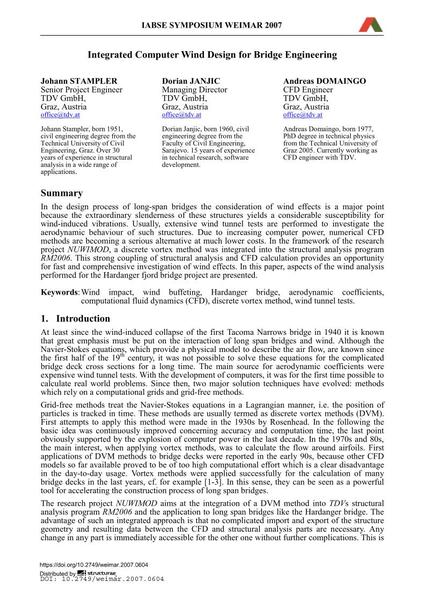| Médium: |
papier de conférence |
| Langue(s): |
anglais
|
| Conférence: |
IABSE Symposium: Improving Infrastructure Worldwide, Weimar, Germany, 19-21 September 2007 |
| Publié dans: |
IABSE Symposium Weimar 2007 |
|
Page(s):
|
568-569
|
Nombre total de pages (du PDF): |
7 |
|
|
Page(s):
|
568-569
|
| Nombre total de pages (du PDF): |
7 |
| Année: |
2007 |
| DOI: |
10.2749/weimar.2007.0604 |
|
Abstrait:
|
In the design process of long-span bridges the consideration of wind effects is a major point because the extraordinary slenderness of these structures yields a considerable susceptibility for wind-induced vibrations. Usually, extensive wind tunnel tests are performed to investigate the aerodynamic behaviour of such structures. Due to increasing computer power, numerical CFD methods are becoming a serious alternative at much lower costs. In the framework of the research project NUWIMOD, a discrete vortex method was integrated into the structural analysis program RM2006. This strong coupling of structural analysis and CFD calculation provides an opportunity for fast and comprehensive investigation of wind effects. In this paper, aspects of the wind analysis performed for the Hardanger fjord bridge project are presented.
|
|
Mots-clé:
|
essais en soufflerie
|

